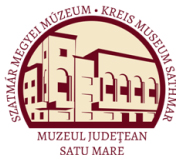Marta, Liviu: The Late Bronze Age Settlements of Petea-Csengersima (Satu Mare, 2009)
IV. Habitation of the Lăpuş II-Gáva I Archaeological Culture
knife from Petea-Csengersima links the examples from the great Transylvanian deposits603 with the examples from the north of the Carpathian Basin (Taliya604, Dolny Kubin605 and maybe Nováky606). It is a link between two deposit areas (but probably also metallurgical centres) among which there are noticeable large-scale technological exchanges in the HaA period that will lead to the making for the first time in “barbaric” Europe of large vessels previously unknown (cauldrons and especially certain early situale of Kurd type)607. On a larger distance it can be noticed that between the western coast of the Baltic Sea and Transylvania the circulation route of luxury pieces but also of technological innovations is marked by objects with personal character (fibulae, bracelets, knives). It was observed that the grave with “Banatic” vessels at Zschornewitz (the south of Saxony) 608 is situated on the route of these bronze pieces. The origin of these vessels is considered to be in the area of Banat to which there can be added the south and central regions of the Great Hungarian Plain or a vast region of the Danube Plain or the south and central Moldavia. The affinities shared by the pottery from Banat and Crişana with the pottery of the southern half of Transylvania609 include this region also in the area where originates the imported pottery in the northern regions. Whether coming from Banat through the Hungarian Plain, or from Transylvania, the imported pottery from Petea—Csengersima and the other southern vessels in the Upper Tisa area can be considered as situated on the route of the “Banatic” vessels found at Zschornewitz (the south of Saxony) or of those found in the south of Poland. Especially in the case of their coming from Transylvania, the sites where the clay vessels are discovered mark some interesting points found on the route of bronze pieces between the western coast of the Baltic Sea and Transylvania. The ritual-religious activity in the Lăpuş II—Gáva I setdement at Petea—Csengersima is documented by the discovery of two pits that have a partially similar structure and composition (S14 complex 5 and complex 589). The two deposits had been placed in pits that had the walls carefully excavated and a flat base (Fig. 12, 24). A common element of the two pits is given by the treatment of the objects from the deposits: these had been shattered and burnt, then carefully gathered, hence the fragments deposited in the pits entirely recompose a great number of vessels and objects (PI. 16-20, 61-62/1-8)610. In this sense it is a relevant fact that the numerous stone fragments from pit SI4 complex 5 can be assembled recomposing a grinder (PL 19/6). A similar situation was encountered in the case of a ritual deposit from the neighbouring settlement at Lazuri, where stone fragments recompose half of a grinder611. Elements of the arrangement of vessel fragments had been observed in the case of pit S14complex 5 and pit 154 at Lazuri612. Significant in this sense is the grouping of some bones into a small pile at the base of the pit at Lazuri. The finds of the two pits at Petea—Csengersima and those of pit 154 in the settlement at Lazuri have common elements, but also traits specific of each of them (Typ. pl. 8). The common parts of the finds is represented by the presence of the vessels used for storage (storage jars, pots, bowls) and of vessels used for drinking and serving liquids (amphorae and cups). In two of the pits there are shared elements like grinders and portable cooking vessels. Elements that were present in only one of the pits are: animal bones in pit 154/ Lazuri; clay weights, a strainer and a bronze 6Ü3 Petrescu-Dâmboviţa 1977, pl. 154/16-18 (Guşteriţa II), pl. 246/7-12 (Uioara de Sus). 604 Mozsolics 1985, caf. 181/8. 605 Veliacik 1983, taf. XVI/8. 606 Hampel 1892, taf. 136. 607 Soroceanu 2008, p. 272. 608 Kossak 1996, p. 293-316. 609 Andriţoiu 1992, p. 69-72; Ciugudean 1994, p. 25-35. 610 Because Qf the deformation suffered due to burning the large vessels could not always be restored. 611 Marta 2008, p. 113, pl. IV/5). 6,2 Marta 2008, p. 113-114, pl. II/l. 86
